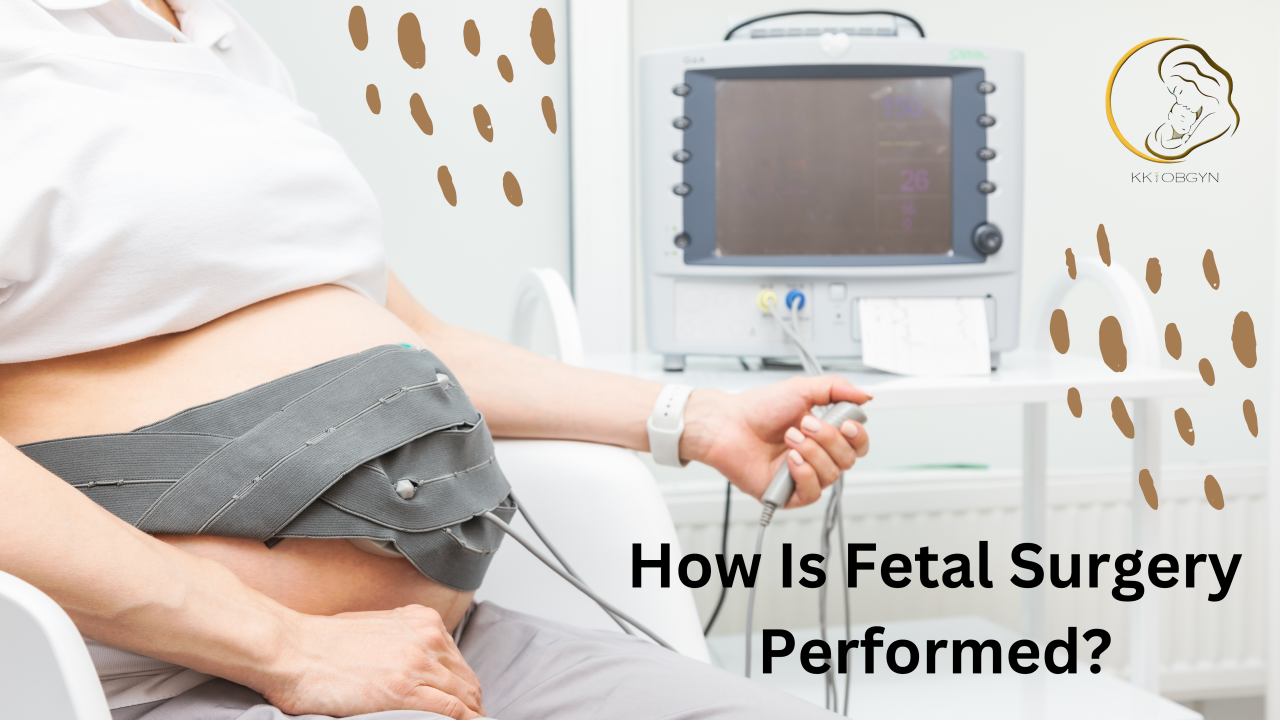Fetal surgery is a complex and highly specialized medical procedure that aims to treat certain fetal conditions before birth. In some cases, babies in the womb develop conditions that, if left untreated, could result in severe complications after birth or even threaten their survival. Fetal surgery offers a solution by addressing these issues while the baby is still in the womb, often giving the baby a better chance for a healthy life after birth.
In this blog, we will explore the types of conditions that may require fetal surgery, how the procedure is performed, the risks involved, and the potential benefits for both the mother and the baby.
When Is Fetal Surgery Needed?
Fetal surgery is typically considered when the baby has a condition that cannot be treated effectively after birth and could lead to life-threatening complications. Some of the conditions that may require fetal surgery include:
1. Spina Bifida
Spina bifida is a congenital defect of the spine in which the spinal cord does not form properly. This condition can cause permanent neurological damage, including paralysis or other physical disabilities. Fetal surgery can be performed to close the opening in the spine and reduce the severity of the condition.
2. Congenital Diaphragmatic Hernia (CDH)
CDH is a defect in the diaphragm that allows the abdominal organs to move into the chest cavity, affecting lung development. Fetal surgery can be used to reposition the organs and help the lungs grow properly before birth.
3. Sacrococcygeal Teratoma
This is a type of tumor that forms near the base of the spine. Fetal surgery can be used to remove or reduce the tumor’s size before birth, as large teratomas can cause heart failure or other complications.
4. Heart Defects
Some congenital heart defects, like those involving the heart’s valves or blood vessels, may be treated in utero. Though less common, fetal surgery can sometimes be performed to repair or improve blood flow to the heart.
5. Cystic Hygroma
Cystic hygroma is a fluid-filled sac that typically forms around the neck. This condition can be associated with genetic abnormalities like Down syndrome, but in some cases, surgery may be performed to drain the cyst and reduce the risk of complications after birth.
How Is Fetal Surgery Performed?
Fetal surgery is a highly delicate procedure that requires advanced medical technology and expertise. It is typically performed in specialized fetal surgery centers and involves a multidisciplinary team, including maternal-fetal medicine specialists, surgeons, anesthesiologists, and neonatologists.
There are two primary types of fetal surgery: open fetal surgery and minimally invasive (fetoscopic) surgery.
1. Open Fetal Surgery
Open fetal surgery is a traditional method where a large incision is made in the mother’s abdomen and uterus to directly access the fetus. This procedure is most commonly used for conditions like spina bifida, where direct access to the spinal cord is required.
Steps in Open Fetal Surgery:
- The mother is placed under general anesthesia.
- An incision is made in the abdomen and uterus to reach the fetus.
- The required surgery (e.g., repairing the spinal cord defect in spina bifida) is performed on the baby.
- Once the surgery is complete, the uterus and abdomen are carefully closed.
This method carries significant risks for both the mother and the fetus, including the risk of preterm labor, infection, and bleeding.
2. Minimally Invasive (Fetoscopic) Surgery
Fetoscopic surgery is a less invasive option, involving small incisions and the use of a camera (fetoscope) to perform the procedure. This method is typically used for less complicated conditions or when open surgery would pose too many risks.
Steps in Fetoscopic Surgery:
- The mother is given regional anesthesia (numbing the lower part of the body).
- Small incisions are made in the abdomen, through which a camera and specialized instruments are inserted.
- The surgeon uses the camera to guide the instruments to perform the necessary procedure, such as draining a cyst or repairing a diaphragmatic hernia.
Fetoscopic surgery generally carries fewer risks compared to open surgery, including a lower risk of preterm labor and less post-operative pain for the mother.
Risks of Fetal Surgery
While fetal surgery has the potential to provide life-saving treatment for the baby, it is not without risks. These risks can affect both the mother and the fetus, and they must be carefully considered before proceeding with the procedure.
1. Preterm Labor
One of the most significant risks associated with fetal surgery is preterm labor. The surgery itself can trigger contractions and cause the mother to deliver prematurely, which can lead to complications for both the mother and the baby.
2. Infection
As with any surgery, there is a risk of infection for both the mother and the baby. The invasive nature of fetal surgery, especially open surgery, increases this risk.
3. Blood Loss
Fetal surgery can involve significant blood loss, both for the mother and the baby. Careful monitoring is required to manage this risk during the procedure.
4. Injury to the Baby
While fetal surgery aims to correct specific defects, there is always a risk of accidental injury to the baby during the procedure. This is particularly true for complex conditions where direct access to the baby is required.
5. Need for Repeat Surgery
In some cases, fetal surgery may not fully resolve the issue, and the baby may require additional surgery after birth. This is more common with conditions like congenital heart defects.
Benefits of Fetal Surgery
Despite the risks, fetal surgery offers significant benefits, especially for conditions that would otherwise lead to severe complications after birth. Some of the potential benefits include:
1. Improved Outcomes for the Baby
Fetal surgery can reduce the severity of certain conditions, such as spina bifida or congenital diaphragmatic hernia, leading to better outcomes after birth. In some cases, surgery can prevent or minimize long-term disabilities or life-threatening complications.
2. Decreased Need for Postnatal Surgery
By addressing the condition before birth, fetal surgery can reduce the need for multiple surgeries after birth. This can result in a smoother transition for the baby after delivery and reduce the overall risk of complications.
3. Preservation of Vital Organ Function
For conditions like congenital heart defects or lung problems, fetal surgery can preserve vital organ function and give the baby a better chance of surviving and thriving after birth.
4. Peace of Mind for Parents
Fetal surgery offers hope to parents facing difficult prenatal diagnoses. It allows them to take proactive steps to improve their child’s health and outcomes, reducing anxiety and uncertainty.
Conclusion
Fetal surgery is a remarkable medical advancement that provides hope for families facing severe prenatal diagnoses. By treating certain conditions before birth, fetal surgery can significantly improve outcomes for the baby and reduce the risk of life-long disabilities or complications. However, it is not without its risks and should only be performed in specialized centers with expert care.


